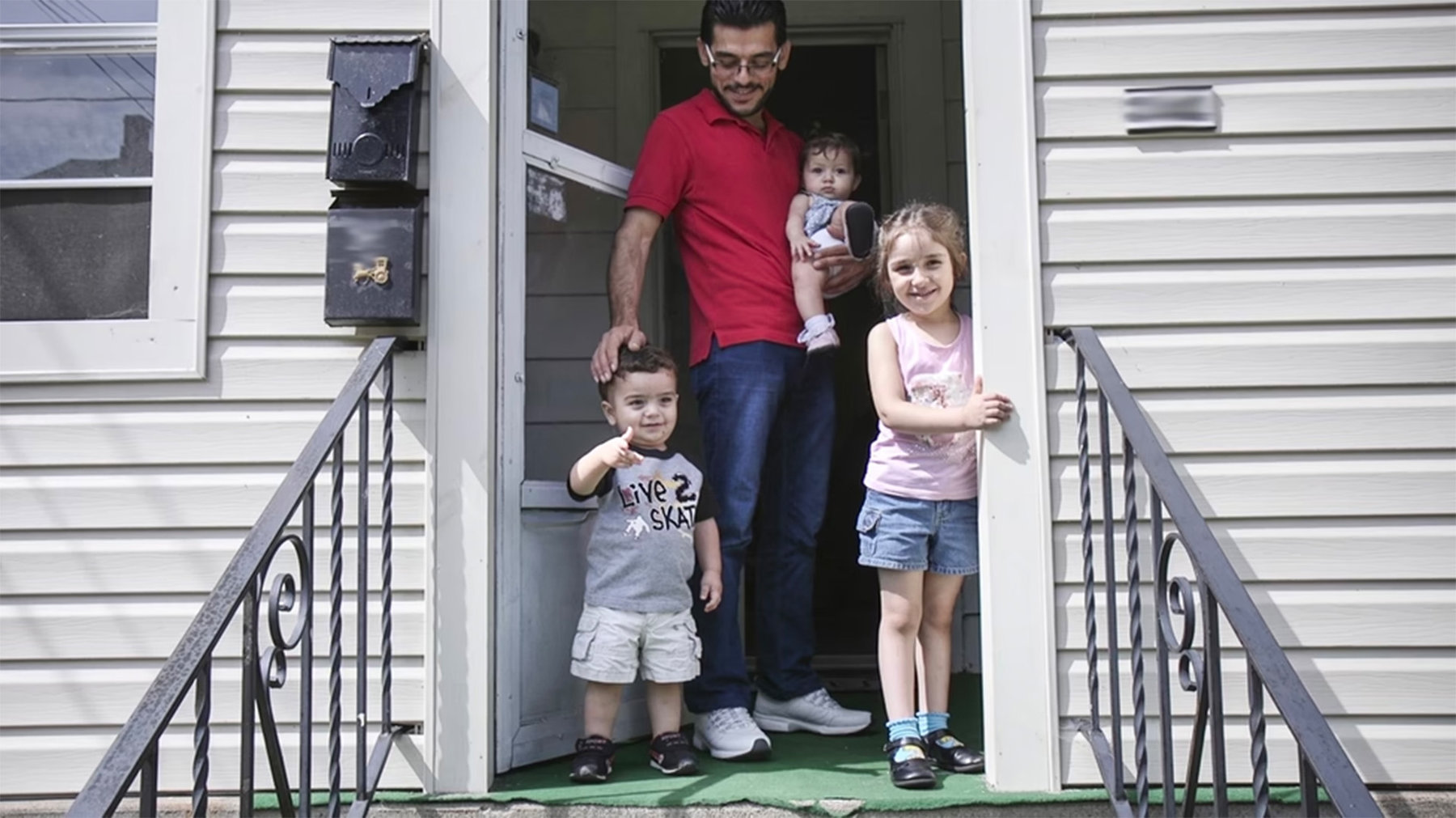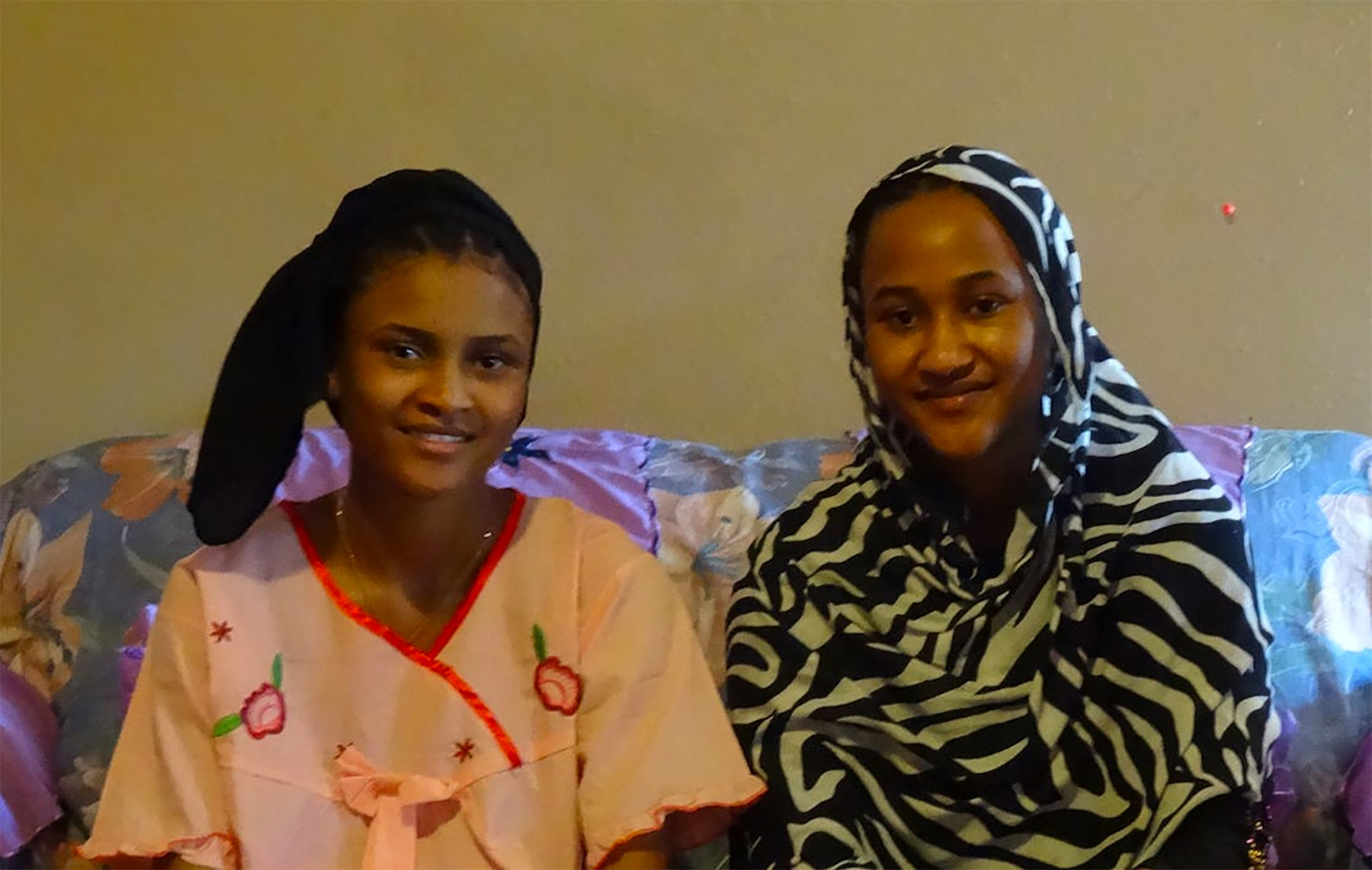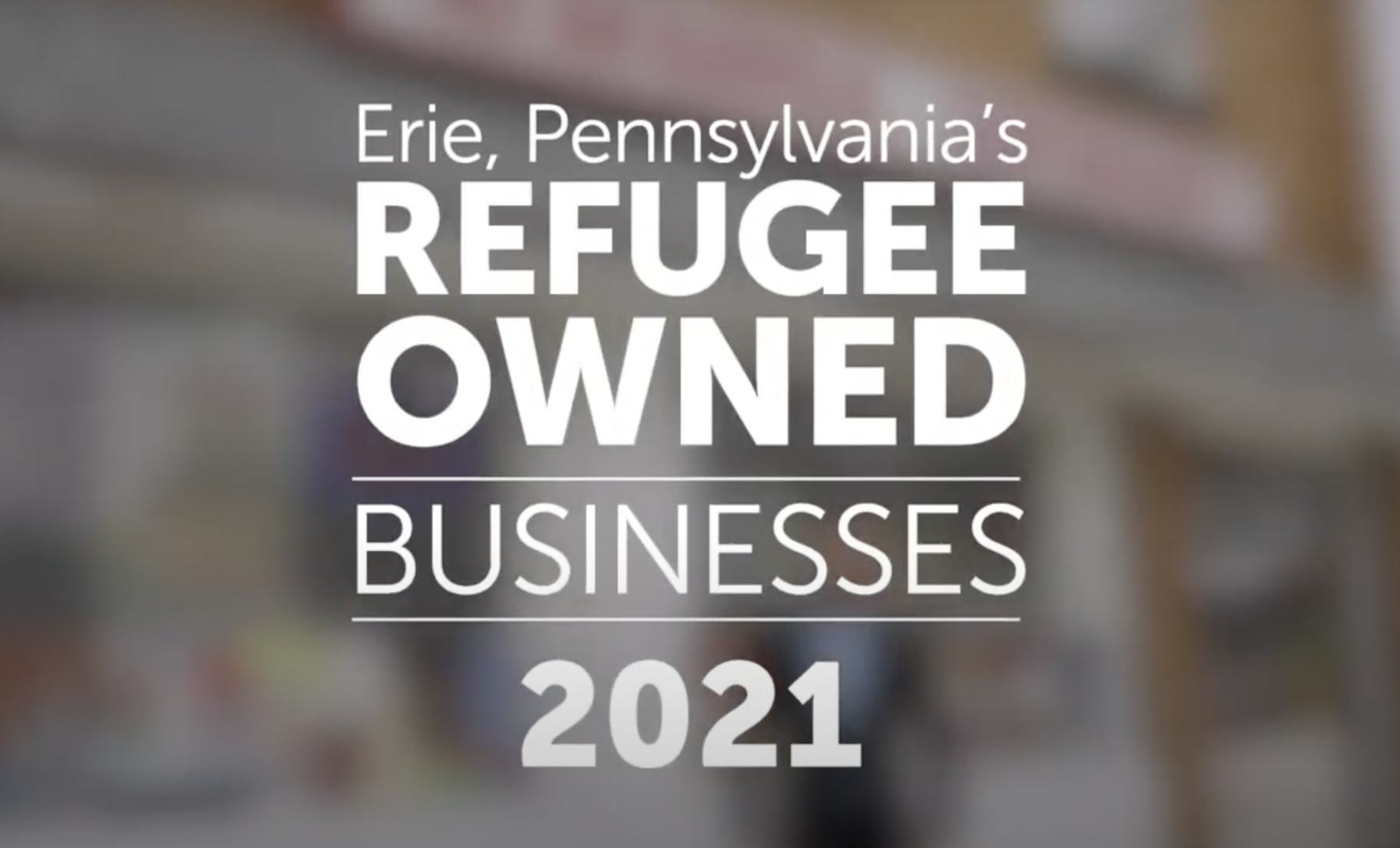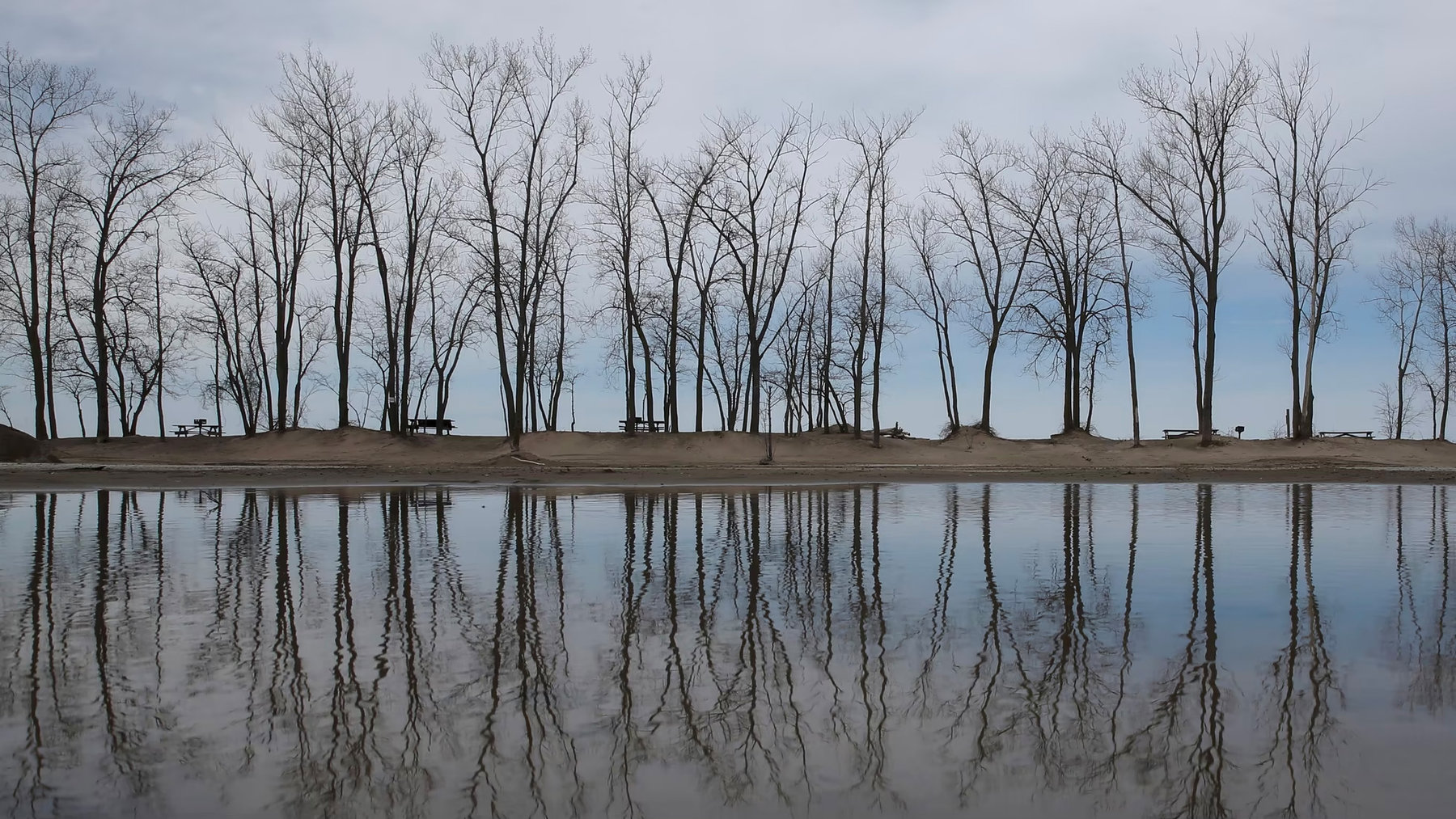The field office of the U.S. Committee for Refugees and Immigrants (USCRI) in Erie, Pennsylvania, was already beginning to bustle before 9 a.m. on the hot August morning when I visited. A woman wearing a bright African cloth wrapped at the waist, with two little children beside her, was sitting on the concrete step in front of the building, waiting for something or someone. Clusters of others, mostly talking quietly in Arabic, were waiting inside in the stuffy reception area. A few of the staff behind the reception windows were greeting everyone who came in. Along the narrow halls, there were day-care rooms and a play area outside. Beyond some parked strollers and water dispensers, a language lesson was in progress; the instructor was juggling a meld of English and culture for a dozen or more men and women seated at long tables.

Behind closed doors in smaller offices, staff were helping people with resettlement procedures. The to-do list is long: housing, employment, language, school, child care, transportation, health screenings, doctors, dentists, clothing, cash assistance, Social Security, citizenship.

Some of the topics covered are looser: neighborhoods, shopping, parks, the library, emergencies, calendars, deadlines, and cultural points, like when it’s appropriate to dial 9-1-1 and expectations for work or school attendance.

As the morning wore on, people continued to drift in; the building was filling up. Upstairs in her office, Dylanna Jackson, who directs the program and has been working around the United States with refugees and immigrants for about two decades, described the reasons for the current whirlwind. She called it the “summer bulge.” Summer is traditionally a busy time for refugee resettlement, but in 2016 even more so, since the Obama administration raised its annual goal of Syrian refugee admissions almost sixfold to 10,000 people. “All the agencies are working as fast as they can,” said Jackson, as more people are moved more quickly into the pipeline. In Pennsylvania’s Region 5, where Erie sits, the arrivals numbered in the 30s and 40s from November through March, fell to 15 in April, and shot up to 79 in June and 91 in July. So far, the total since October 2015 for Region 5 is 520, and 2,645 for all of Pennsylvania.

being bombed in 2012. (Deborah Fallows)
Part of that summer bulge was the Zkrit family, who arrived in Erie early in June. In 2012, Mohammad Zkrit was living in Aleppo, Syria, with his young wife, Yasmine, and two small daughters, and was working in a fabric factory. Then one day, his neighborhood was bombed by forces under Bashar al-Assad’s command. His house was decimated, and he was injured. He showed us a video on his phone of the devastation, confusion, and injuries.
Zkrit fled Syria with his family to a camp in Lebanon. After a few months, the family moved on to Jordan. He had lost track of his brother in Aleppo, and to this day doesn’t know his fate. Seeing no future in Jordan, the family applied to the United Nations High Commissioner for Refugees to obtain refugee status. After three years in Jordan, they were offered the chance to resettle in the United States. Zkrit, 36, and his wife, 26, and their growing family of four young children, boarded a plane in Amman bound for Chicago and ultimately Erie, Pennsylvania.
Erie has a long history of immigrants and refugees, beginning in the early 20th century with an influx of Poles, Italians, Germans, Irish, and Russians. Now, the faces have changed: Somalis, Congolese, Bhutanese, Iraqis, and Syrians. Some 10 percent of today’s Erie residents arrived there as refugees.
Ironically, when Donald Trump held a rally in Erie just days before we arrived, he specifically stirred the pot with the issue of refugees. Trump called out Syrians in particular. There are at least 300 Syrians now living in Erie. None of the many dozens of people we spoke with during our week in Erie talked about the Trump rally unless we asked. There wasn’t much interest. Furthermore, they didn’t recognize the rally attendees as folks from the town of Erie. They looked like people from the outlying rural areas, they told us.

When I asked Jackson if the USCRI had received calls or queries since Trump began speaking vociferously about refugees, she said there had only been the occasional call, mostly people who wondered what the organization did and who the arriving Syrians were. The staff fielded the questions and sometimes held information meetings if people requested them.
The response to refugees in Erie didn’t surprise me. As we’ve traveled the country, we’ve found that the more immigrants or refugees settled in the communities, the less concern there was about the upsets or risks they might bring. In fact, the words we became used to hearing—in Sioux Falls, or Burlington, which both have similar refugee populations as Erie, or in Dodge City, which is newly 60 percent Hispanic—were “We embrace each other” or “They make our community stronger.”
Both the refugees and those who help them describe the advantages of Erie as a good place to start new lives. It is a small town, easy to navigate. The schools and neighbors are welcoming. It is safe.
I went to visit the Zkrit family in their modest house on the east side of Erie, a few blocks east of State Street, which is the socioeconomic dividing line in Erie. The fancier folks live on the west side. Arriving at the doorstep of their new home is often the hardest moment for the refugees, Jackson told me, especially for those who were lawyers, doctors, or other professionals in their previous lives. They were suddenly walking through the door to their new reality and a more humble life that would be at least temporarily permanent.

When Mohammad pulled up in his family’s new minivan, I admit I was a little surprised. Bought on time, the translator, Bassam Dabbah, explained. Of course. The family lived on the first floor of the house, which they rent for about $550 or $600 a month. For three bedrooms and one bath, it seemed like a bargain, until you do the math, figuring that, at a starter job, once he gets one, Zkrit will probably earn somewhere between the minimum wage of $7.50 an hour and $10 an hour.
There was plenty of furniture around the house, all obviously second-hand. And a nice TV. The two older girls shared a girlie room, with their favorite toys, which they told me are Barbies. Anayat, who is 8 years old, said she wants to be a doctor. Hanin, who is 6, wants to be an airplane pilot. School starts very soon, and it is just a few blocks from their house. Little Yahia, their only son, who toddles sturdily at one-and-a-half, and tiny Rimas, just 6 months old, were both remarkably good and patient, I thought, especially for little ones without much diversion.

Mohammad says he will take any job he can get. He hopes to be happy in Erie and make his home there, “We are treated as human beings,” he said through his translator. “America is a dream country.”




